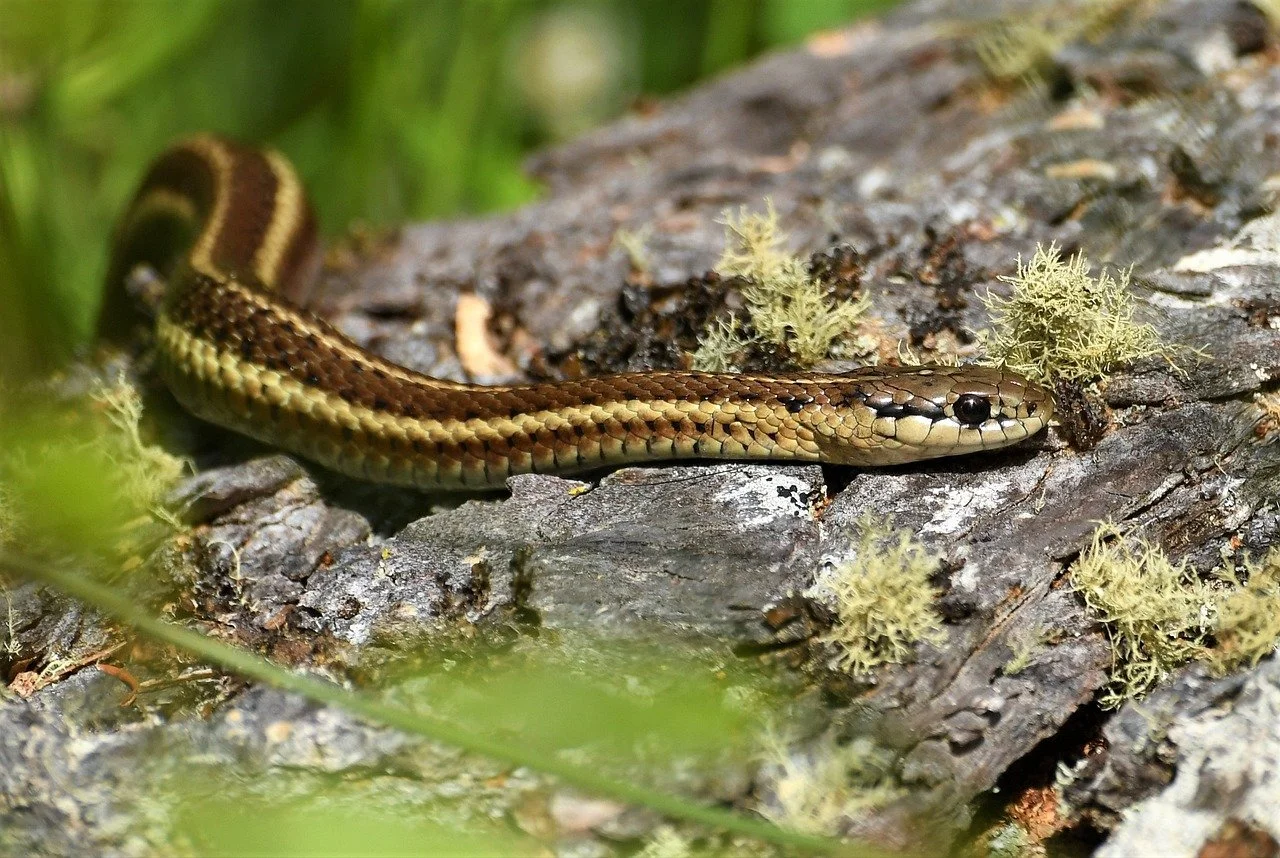Preparing for Winter
When the temperature drops and the days get shorter that is an alarm bell to nature that it is time to get ready for witner. Winter is a difficult season for many New England animals. Let’s take a look as to how some local animals are using the fall as their prep season for winter.
Snakes
Garter snake looking for a nice place to bask.
As the air chills and the leaves fall in the early days of fall we can often see more snakes. They are more likely to look for a sunny spot to bask in as they try to warm up from the colder air.
Snakes will further prepare for winter by looking for a place to hide from the cold for when they enter Brumation. Sometimes snakes will steal a burrow from another animal such as a chipmunk and even eat that animal!
Honey Bees
Honey Bees gathered at their hive.
Bees will spend the early days of fall gathering a winter reserve of honey. Once the temperature drops below 50 degrees Fahrenheit it is go time for these buzzing bees. They will cluster together in a central chamber of the hive (with the queen in the center) and shiver to generate heat.
This cluster can be up to 3 inches thick and 20 degrees warmer than the outside temperature. The bees will remain clustered until the outside temperature reaches above 50 degrees Fahrenheit.
White-Tailed Deer
White-tailed deer are the most common deer in New England. Deer are active winter animals, they will not hibernate or hide from the cold but rather adapt to survive during it.
In the Fall the deer will prepare for winter by shedding their summer coats and growing thicker fur to replace it. The deer will also consume more food to build up fat reserves for the winter.
One of the coolest things a deer does in winter is shed its antler! The Buck (male deer) will shed its antlers between January and March!
White-tailed deer grazing
Bats
Bats are true hibernating mammals and will enter a state of torpor during the cold winter months.
Bats have to prepare for hibernation starting in mid-October! They will eat as much food as possible to build up extra fat stores during this time. Once they begin hibernation they will slowly metabolize these fat stores over the winter.
Bats will also be searching for hibernation sites during this time. You might find bats in your home! Attics are ideal hibernation sites as they provide a comfortable temperature and protection from predators.
Many other New England animals prepare for winter in their own ways but many utilize these successful processes!
Brumation: Other animals that prepare to brumate such as the snake include cold-blooded animals such as frogs, lizards, and turtles.
Winter Coat: More mammals that are active in the winter and stay warm with a new coat of fur are foxes, coyotes, and bunnies.
Fat Stores: Many animals whether they are active in the winter or hibernate will build up fat stores in the fall due to a lack of food sources in the winter.
Hibernation: Entering a state of hibernation during the winter months is practiced by other animals to avoid the cold such as mice, bears, and groundhogs.




